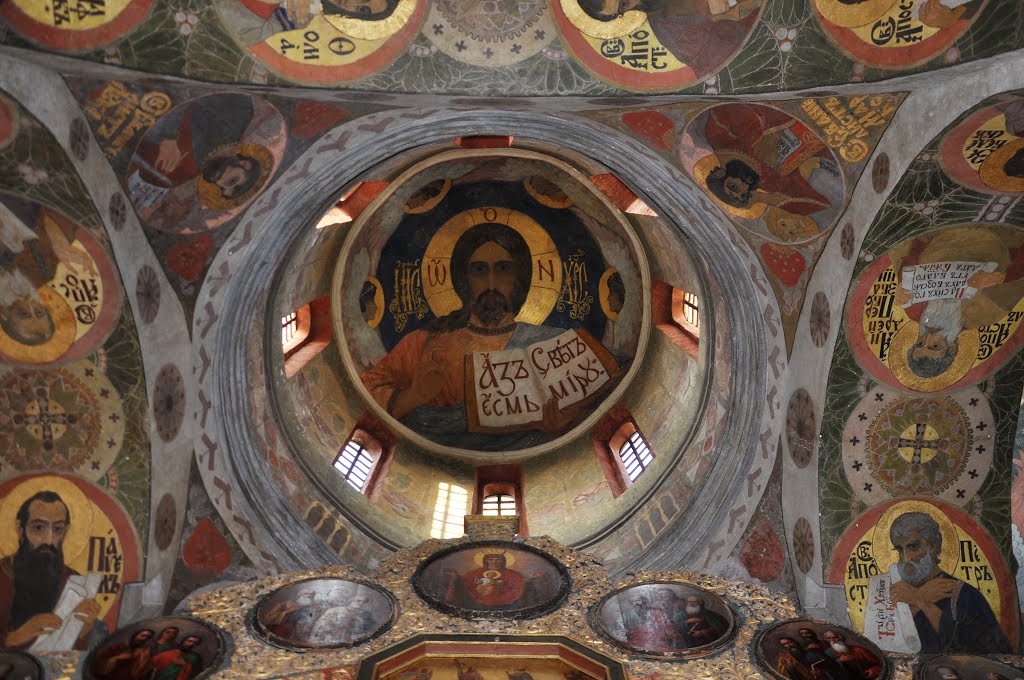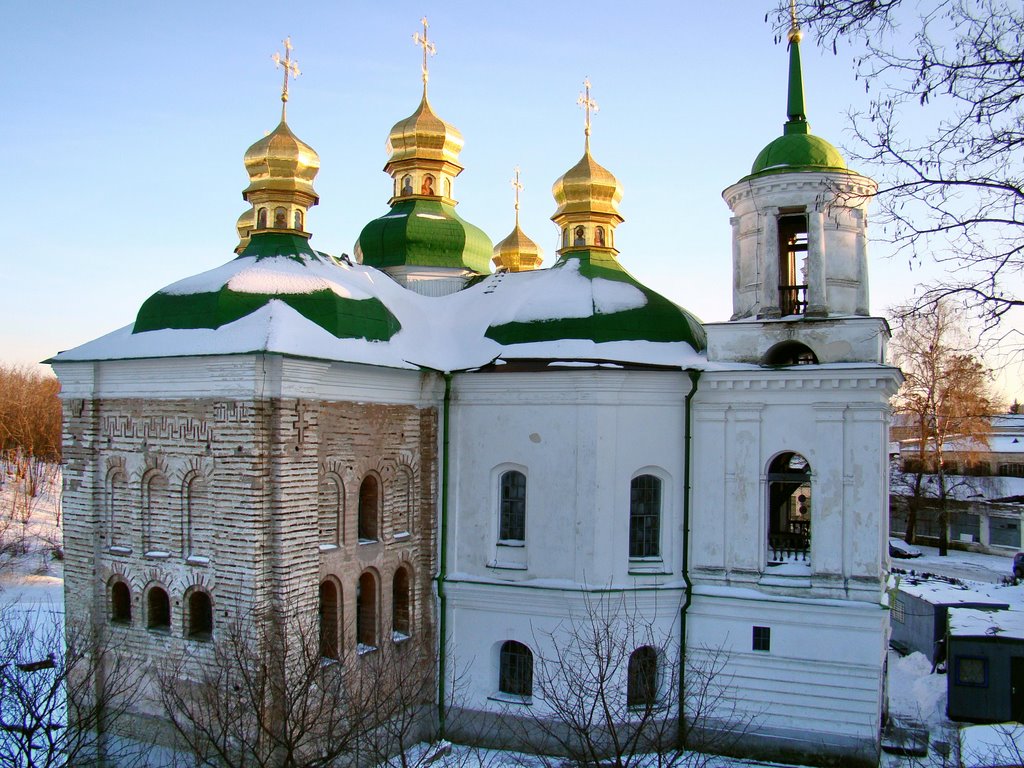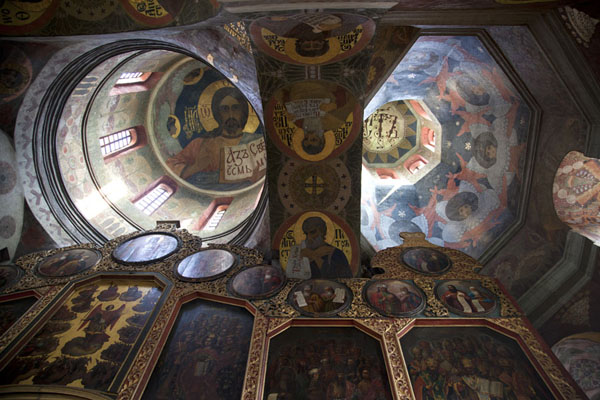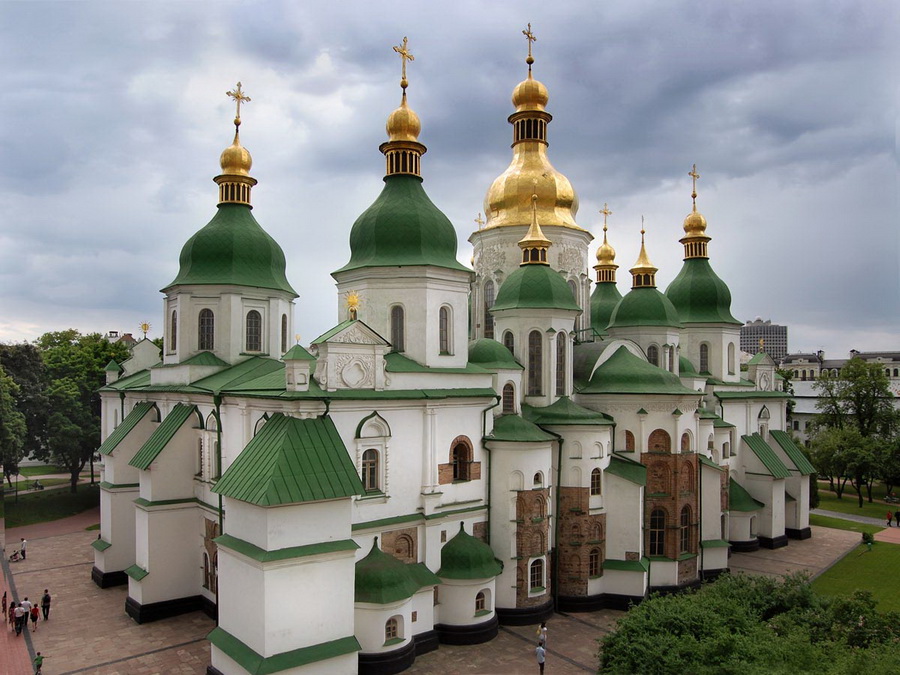The Church of the Saviour at Berestovo is a church located immediately north of the Monastery of the Caves in an area known as Berestove. Although it is situated outside the Lavra fortifications, the Saviour Church is part of the Lavra complex and the related World Heritage Site.
Berestovo was a suburban residence of Vladimir the Great (who died there in 1015) and some of his descendants, including Vsevolod I and Vladimir II. It was also the site of a monastery, first recorded in 1073. Construction of the present structure is not documented, but most art historians date it to the reign of Vladimir Monomakh (1113–1125). Indeed it has structural parallels with the churches of Pereyaslav, especially those built during Monomakh's administration of the town at the turn of the 12th century.
Monomakh's court church was larger than most cathedrals built in Kiev in the 12th century and had three naves, three apses, and probably three domes. The western (narthex) wall survives almost intact, while the other walls are known by way of excavations. The western part of the church was separated from the naos, forming a narthex, flanked by a baptistery on the north and a projecting tower on the south. The tower contained the winding stairs leading to the gallery for the ruling prince, his family, and guests.
Art historians believe that the Saviour Church introduced some structural innovations into architecture of Kievan Rus. For the first time in Rus, all three entrances had projecting porches with steeply-pitched trefoil roofs. This novel feature may be interpreted as key to the overall concept of the church. Monomakh's architects apparently wished to emphasize verticality of the church, a basically Gothic formula which would be fully developed in Smolensk and Polotsk.
If the Berestovo church was indeed the first germ of this new manner, its vaulting may have been unusually complicated, probably echoing the trefoil roofing of the porches. The outside of the church formerly displayed intricate brick patterns: double and treble niches, the meander, and decorative crosses. For the first time in Kiev, no limestone was used in the construction, once again foreshadowing the practices of the mid-12th century













